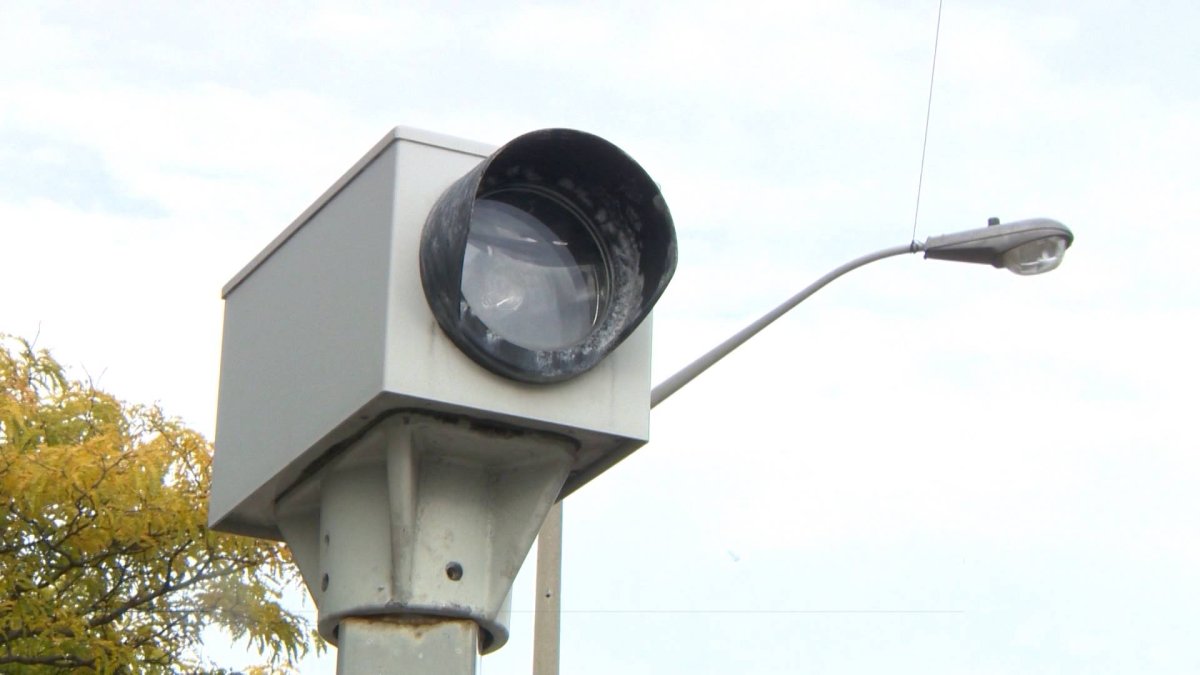A Hamilton city councillor says revenue collected from over 20,000 drivers caught by the city’s 34 red light cameras in 2019 is creating a “reciprocal” fund which will pay for more automated speed enforcement in the near future.

Downtown Coun. Jason Farr says another year-over-year bump in fines collected from red-light camera violations has put millions into the city’s traffic safety fund that finances the cameras and other speed-prevention technologies.
“If a councillor wants to put a speed trailer on Upper Kenilworth, or put some calming at different intersections and create a more conducive environment and safer environment for pedestrians and vehicles alike,” Farr said, “then we have the millions of dollars that the red light camera reserve has garnered to be dedicated specifically to those initiatives.”
In a legal services report, presented to councillors during last week’s general issues committee meeting, $13.6 million in revenues was collected from overall policing charges, including those under the province’s Highway Traffic Act.
Farr, whose ward has the top four red-light cameras issuing tickets in the city, says somewhere between $4 million and $6 million of that was collected from the cameras based on a fine of about $320, including surcharges and other charges.
“What we have garnered from the increase in fines is a massive dramatic decrease in collisions. So that’s the good news on the red light camera program.”
And offenses captured by the program continues to grow year over year, up from the 18,435 recorded in 2018 and the 16,134 in 2017.
However, the legal services statement also shows that the increase in offences correlates with an increase in the number of new cameras being installed, not an increase in violations in the city.
The report says the average number of charges coming from each camera has actually dropped below 1,000 per year, compared to the initial years of red-light cameras when the city used two to four moveable vehicle cameras.
In those years, almost a decade ago, offence rates were well above 1,000 per year per camera.
Despite the windfall for the automated traffic safety fund, Farr insists it’s not a “cash grab,” but a deterrent for drivers.
“As a former chief of police, Glenn De Claire used to say, ‘compliance is free if you’re not speeding,'” Farr said.
“If you don’t run the red light, you’re not going to have to pay anything.”

The successful red-light program will contribute funding for the city’s forthcoming pilot project to test photo radar in school zones approved by the city’s public works committee in mid January.
The city will rotate the two camera locations throughout the year-long pilot project at an estimated operating cost of $2.45M.
The mobile cameras are expected to move from place to place during the one-year pilot. Drivers will be notified of each movement 90 days before the cameras are implemented.
The motion still needs to be ratified by city council.
If approved, staff are expected to report back with the results of the project in early 2021.
- Alberta to overhaul municipal rules to include sweeping new powers, municipal political parties
- Canada, U.S., U.K. lay additional sanctions on Iran over attack on Israel
- Trudeau says ‘good luck’ to Saskatchewan premier in carbon price spat
- No more ‘bonjour-hi’? Montreal mayor calls for French only greetings




Comments